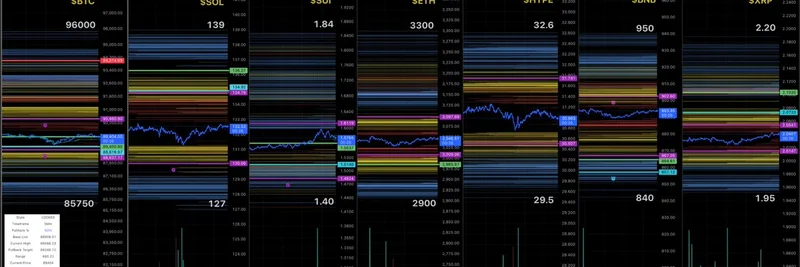In the fast-paced world of crypto, a recent exchange on X (formerly Twitter) caught my eye, perfectly capturing why so many folks are diving into meme coins and speculative bets instead of traditional building. It all started with a thought-provoking post from Akshay BD, who laid out how modern society is messing with price discovery—the process where markets figure out the true value of assets through supply, demand, and open information.
Akshay points out that things like central bank policies (think quantitative easing and super-low interest rates), government subsidies, and even funky accounting in public markets are all creating layers of distortion. These make prices unreliable signals. For example, subsidies on food or energy hide the real costs, while student loans inflate education prices way beyond what's reasonable. The result? People can't trust what things are really worth, so they turn to gambling—meme stocks, wild options trades, or sports betting, all hitting all-time highs.
This hits home in the meme token space, where volatility is king. Meme coins, those fun, community-driven tokens often inspired by internet jokes or trends, thrive in this environment because traditional markets feel rigged or opaque. Without clear price signals, why bother with long-term investments when a quick YOLO (you only live once) bet on a dog-themed coin might pay off big?
Then comes the reply from jahris_, boiling it down to a crisp mantra: "When the internet becomes the market, distortion dies. Price is truth." It's a nod to how blockchain and on-chain markets could fix this mess. Akshay expands on this in his post, highlighting Solana as a prime example. Solana, a high-speed blockchain known for its low fees and meme coin ecosystem (think tokens like Dogwifhat or Bonk), forces price discovery by making every trade transparent, instant, and accessible worldwide.
Why Price Discovery Matters for Meme Tokens
Price discovery isn't just jargon—it's the heartbeat of any healthy market. In traditional finance, gatekeepers like banks or regulators can obscure info, leading to bubbles or crashes. But on blockchain platforms like Solana, everything's on-chain: trades happen in real-time, visible to anyone with an internet connection. No more "mark to model" valuations or hidden leverage; it's all out there.
This transparency turns the internet into a global marketplace. Imagine prediction markets where you bet on real-world events, tokenized versions of stocks from any company, or synthetic assets mimicking commodities—all tradable 24/7 without middlemen. For meme coin traders, this means fairer games. Speculation still exists (and let's be real, it's part of the fun), but distortions fade, letting true community value shine through.
The Shift from Gambling to Building in Crypto
Akshay's take resonates because it explains the surge in meme coin mania. When prices are lies, building sustainable projects feels futile. Why pour effort into a startup if subsidies prop up competitors unfairly? Instead, people gamble on memes, where hype and virality drive prices in the open.
But as more assets move on-chain, that changes. Blockchain practitioners can access "truth" via price charts, planning better and taking calculated risks. Solana's ecosystem, with its rapid transactions and growing DeFi (decentralized finance) tools, is leading this charge. It's not just about memes; it's about rebuilding trust in markets.
If you're in the meme token game, this discussion is a reminder: look beyond the hype. Use on-chain data to spot real opportunities, and remember, in a distortion-free world, price really is truth. Keep an eye on thinkers like Akshay and jahris_ for more insights—they're spotting trends that could shape the next bull run.

